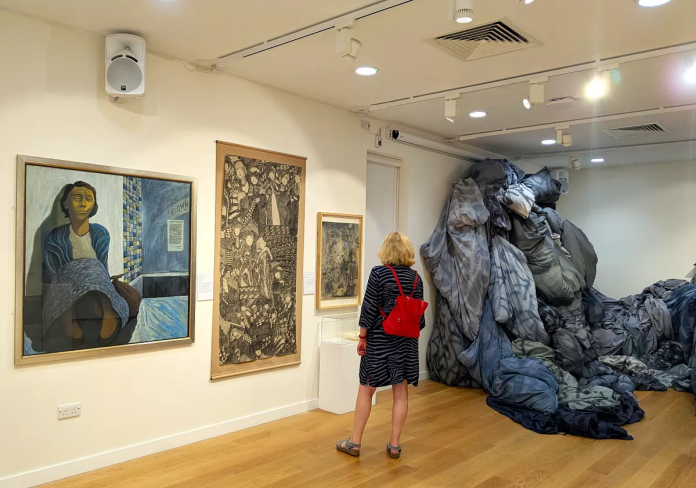England’s oldest psychiatric institution, Bethlem Royal Hospital, has opened a profoundly moving exhibition titled Between Sleeping and Waking, showcasing previously unseen artworks created by patients over two centuries, according to Euronews.
The display, hosted at the hospital’s dedicated Museum of the Mind, delves into the universal experiences of sleep, dreams, and nightmares through a collection ranging from historical poetry to contemporary installations.
Curators have paired intimate creations with scientific research into cross-cultural dream archetypes. Colin Gale, Director of the Bethlem Museum of the Mind, explained the approach:
“What we’ve done is taken the work of sleep researchers and they’ve developed a taxonomy of the dreams that are most commonly shared widely across society and across cultures as well. And then we’ve gone to our museum’s rich collection of reserve artworks and we’ve managed to find a picture that kind of illustrates every single one of those archetypes as it were,” Gale said.
The exhibition features a remarkable diversity of works, including an ode to a deceased pet squirrel penned by a man who once attempted to assassinate King George III, alongside modern pieces such as bedsheets inscribed with anxious nocturnal thoughts.
Among the most powerful works is Nightmare (1953) by Canadian artist William Kurelek, who received treatment at Bethlem in the 1950s. His painting served as a visual dialogue with his doctors, attempting to articulate his profound psychological torment.
The exhibition also addresses the pervasive experience of insomnia through Kate McDonnell’s monumental installation Night Tides. Constructed from duvets, pillowcases, and bedding covered in frantic, looping text, the piece captures the irrational anxieties that emerge during sleepless nights.
“So, this artwork is about insomnia and the weird state that we occupy in the middle of the night. So, it’s made from duvets and pillowcases and bedding and it’s all written over with those kinds of anxious thoughts that we have, the irrational weirdness that insomnia really generates. And a lot of my work embodies uncomfortable, intangible feelings,” McDonnell explained.
Housed within the grounds of Bethlem Royal Hospital—an institution operating since 1403 that inspired the term “bedlam” and numerous cultural depictions of madness—the museum continues its mission to destigmatise mental health struggles through artistic expression.
The exhibition remains open to the public until 8 November, offering a rare glimpse into the intersection of creativity, psychology, and the universal human condition.
